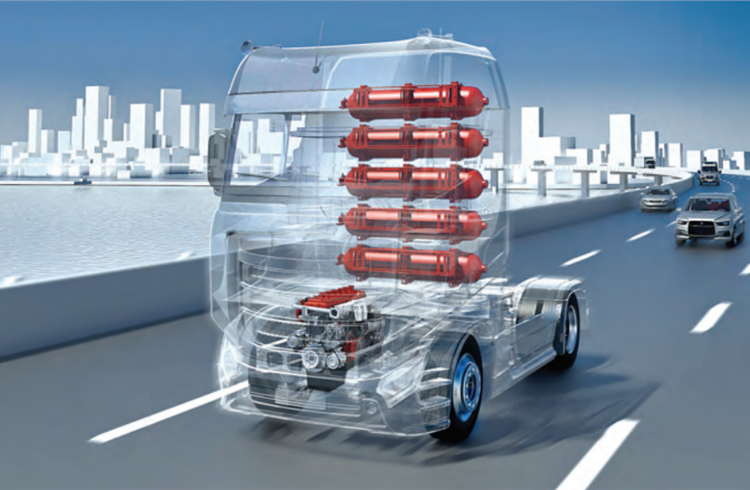
India, a fossil fuel dependent country has set a huge emissions target for itself. At the 26th session of the Conference of the Parties (COP26) of the United Nations Framework Convention on Climate Change (UNFCCC) in November 2021, Prime Minister Narendra Modi reiterated that the country will achieve the target of net zero emissions by 2070. Then at an India-focused discussion on the sidelines of the 77th United National General Assembly (UNGA), panellists, policymakers and private sector executives said that India could turn net zero even before the 2070 deadline set by PM Modi.
In February 2022, India pushed the envelope further with the introduction of a landmark Green Hydrogen Policy to aid in the deployment of green hydrogen projects in India. The policy encourages the production and use of green hydrogen, establishes manufacturing zones, and incentivises green hydrogen/ammonia manufacturers to obtain renewable energy through the power exchange or establish their own renewable energy projects.
More recently, in January 2023, the Union Cabinet approved Rs 19,744 crore for the National Hydrogen Mission. This amount included Rs 17,490 crore for the Sustainable India Green Hydrogen and Technologies (SIGHT) programme, Rs 1,466 crore for pilot projects, Rs 400 crore for research and development, and Rs 388 crore for other mission components. These programmes, along with the recently announced Production Linked Incentive (PLI) Plan for solar photovoltaic, the manufacturing of advanced cell chemistry (ACC) batteries, and FAME subsidies for EVs, are tangible policy pushes toward realising these ambitions, experts claim.
Net zero, or becoming carbon neutral, implies not adding greenhouse gases to the atmosphere. For India, it’s a tall order. And to achieve it will need a clearer direction to move away from fossil fuels.
“India has just set a net zero target for itself. But it lacks concrete sectoral targets and a trajectory and short-term milestones and targets. There is much work for India to do,” Sunil Dahiya, an analyst from Centre for Research on Energy and Clean Air (CREA), told media.
The Swiss firm IQAir’s 'World Air Quality' report says India was the world's eighth most polluted country in 2022. India is home to some of the world’s most polluted cities and accounts for a large number of pollution-related deaths. Vehicular movement, including private and public vehicles that run on petrol or diesel, contribute to these statistics in a big way.
As it happens, the country is still heavily dependent on coal for its energy requirements. This fossil fuel makes up for over half the installed energy capacity in the country and is expected to touch around 266 gigawatts by 2029-2030, according to the projections by climate group Climate Action Tracker.
Currently, India spends more than US$160 billion in forex each year on energy imports. It is anticipated to rise significantly in the next 15 years. Experts reckon that to achieve its 2070 zero emissions target, India needs to invest at least US$10.1 trillion right now and if the deadline is advanced to 2050, the amount will be US$13.5 trillion.
Notwithstanding, India has started on the road to get there. While there has been some progress in diverting two-wheeler, three-wheeler and passenger cars from internal combustion engines (ICE) to greener solutions like hybrids or electric vehicles (EVs), the bigger chunk of diesel trucks and buses is where a lot more has to be done. India must “invent an entirely new method of progress, which will be extremely difficult,” said Gurmit Singh Arora, Chairman of the Confederation of Indian Industries (CII) Indian Green Building Council. For the clean movement to progress further, India’s key stumbling block till now has been the availability of funding and future technologies.
Autocar Professional takes an in-depth look at where the automotive industry stands now and the way forward.
Highway to Hydrogen
With India on the verge of announcing a bid for incentives to set up green hydrogen and electrolyser manufacturing by May 2023, industrial conglomerates, as well as automakers eyeing a foray into space are closely tracking the developments.
Realising the commercial opportunity in the green hydrogen segment, India's private sector has, in fact, laid out some grand plans already. Take for instance, oil-to-telecom conglomerate Reliance Industries which is working on the entire green hydrogen ecosystem with an investment of more than US$ 4.4 billion, which it plans to accomplish by 2030.
Tata Group, on the other hand, intends to infuse over US$ 5 billion in the entire green-hydrogen value chain. Other major private companies include Larsen & Toubro (L&T) and Vedanta. JSW, among others, seems not far behind although the suspension of the potential US$ 50 billion renewable energy collaboration between the Adani Group and French energy giant Total Energies SE, over allegations of fraud by Hindenburg Research, a short seller on the former, has come as a stumbling block.
|
